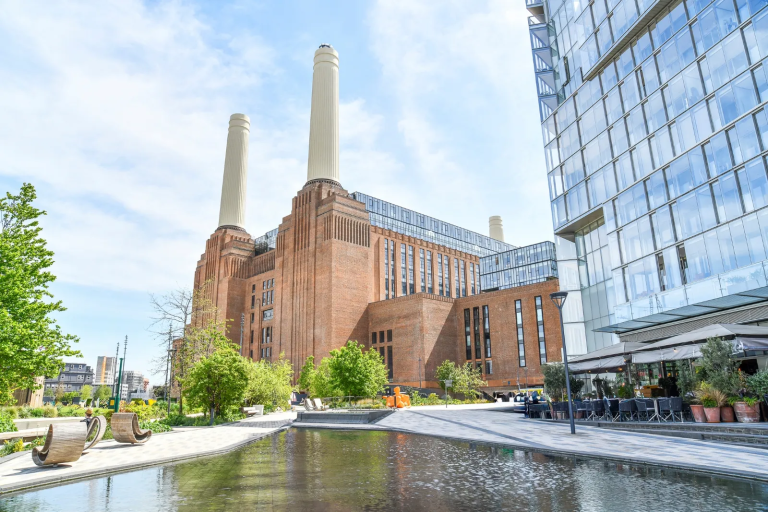Exploring The Rise Of Vertical Communities
For many, vehicles are required when running a circuit of errands to fulfill a variety of daily necessities. In the near future, all that will be needed is an elevator.
The vertical integration of communities—an entire village of residents, retailers, and recreation in a single skyscraper—is on the ascent in the world of high-rise luxury condos. These communities encompass areas to live, work, and play, including verdant areas to enjoy natural scenery as well as offices, services, and entertainment.
1190 Dundas St E #1101, Toronto, ON
As one of the most promising luxury high-rise trends in the market today, it merits a closer look to understand why mixed-use communal and commercial towers are becoming hugely popular, and potentially the new norm, in sustainable urban design.
The Ascent of Vertical Communities in Architecture
United Kingdom Sotheby’s International Realty
The transition towards vertical living spaces contributes a viable solution to multiple issues confronting society. In order for a growing number of people to cohabit harmoniously with one another and with the natural world, urban planners, geographers, and architects acknowledge they need to build upwards, not outwards.
This presents compelling opportunities for architects. Incorporating amenities into luxury condominium buildings has long been standard; but to factor in green spaces and gardens, innovative and sustainable materials, renewable power generation, intelligent automation, and vibrant public gathering places represents a new frontier for designing and developing vertically integrated neighborhoods.
Sotheby’s International Realty East Side Manhattan Brokerage
Already, there are notable instances of vertical communities. Those who live at 25 Columbus Circle in Manhattan are part of an immense yet conveniently compact development unfolding over 2.8 million square feet. A multilevel atrium filled with upscale shops and a large organic grocery store connects two towers containing office spaces, restaurants, and apartments. Residents are situated right above Jazz at Lincoln Center, and have honorary access to the five-star amenities at the co-located Mandarin Oriental Hotel.
Urban Vertical Living Brings Some Unique Benefits
When it comes to vertical urban developments, delivering an optimal quality of life is a priority for architects and designers. This means that there are numerous advantages to living in these communities.
United Kingdom Sotheby’s International Realty
For example, many city-dwellers have limited access to the natural environment, even though proximity to plants, trees, water, and fresh air does wonders for physical and mental health. With a focus on sustainable vertical living, these communities often feature green spaces such as rooftop gardens, living walls, and other landscaped areas, so people don’t have to choose between the convenience of apartment living and the beauty of the outdoors.
Jameson Sotheby’s International Realty – Lincoln Park
Similarly, the consolidation of different facilities and functionalities into a single building grants more immediate access to the types of spaces where people naturally congregate and gather—whether it’s play areas for kids, gyms and fitness centers, or restaurants and lounges. These developments are fundamentally social, fostering intermingling opportunities for residents to create an authentic sense of community.
Jameson Sotheby’s International Realty – Lincoln Park
These buildings also tend to be on the leading edge of architectural and technological innovation, as evidenced by the sleek contemporary design of The Reed—a stunning new development on the Chicago River. While the condos are sophisticated, it’s further enhanced with comfortable lounges and co-working spaces, an outdoor amenity deck with cabanas and al fresco dining areas, and an interactive sports simulator.
Vertical Living Projects That Offer a Proof of Concept
The Reed and 25 Columbus are just two illustrations of the luxury lifestyles afforded by vertical communities. There are many others, including those designed by world-renowned “starchitects” and their award-winning firms, as well those that have repurposed historical structures as visionary living developments.
ONE Sotheby’s International Realty Coconut Grove
Today, an original Zaha Hadid skyscraper in Miami provides full-service vertical community benefits, with spacious apartments complemented by amenities such as a sky lounge, a deluxe spa, and a wellness center that spans both indoors and outdoors.
United Kingdom Sotheby’s International Realty
Meanwhile, the Battersea Power Station in London—an industrial masterpiece crowned by its four iconic furnaces—is now a beautifully integrated community with a lush terrace on its 11th floor and a leisure facility open only to residents of the building.
While these are just a few of the innovative vertical communities redefining modern living, there are likely to be many more in the decades to come. And that’s good news, because they not only allow for impressive feats of architectural creativity, but intelligent and thoughtfully designed urban density is going to be increasingly necessary for the cities of tomorrow.
This article was originally published in Sotheby’s International Realty Extraordinary Living Blog in May 2024.








